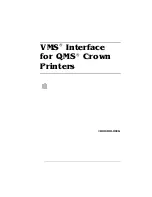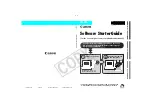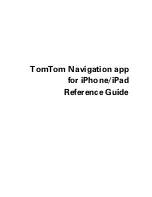
48
Aruba AirOS
Part 0500036-02
v2.3 User Guide
January 2005
setting decisions independent of the switch and based on the RF environment as they hear it.
This results in a highly scalable and reliable RF environment while also significantly reducing
the AP’s reaction time to the network.
The APs scan all valid channels (channels in the regulatory domain) at regular intervals and
compute the following metrics per channels -
z
Coverage index : signal to noise ratio for all valid APs
z
Interference index : signal to noise ratio for all APs
These metric are used by the APs to decide the best channel and transmit power settings for
optimal coverage.
Deciding the Channel Setting
In addition to the interference index, the APs use the free-channel index for deciding the
optimal channel setting. The free-channel-index is configurable parameter on the switch used
by an AP to qualify a channel before moving to it. An AP will choose to move to a new channel
only if its current channel interference index is greater than the interference index on the new
channel by a value greater than or equal to the free-channel index. If the criteria are not met
the AP will remain on the current channel.
Deciding Power Settings
The power assignment decisions are based on the APs coverage index. The benchmark used
here is the ideal coverage index. The ideal-coverage index is the ideal power setting that an AP
should have for good coverage. It is a configurable parameter on the switch. The AP will
increase or decrease its power settings based on the difference between the value of its current
channel coverage index and the ideal-coverage-index value. The power settings increment /
decrement by a single unit at any given time.
Advantages of Using ARM
Using ARM provides the following benefits:
z
With ARM, the switch does not have a downtime for initial calibration. Though this pro-
cess is still optional, it is no more a necessity.
z
The AP response time to noise is quick and reliable, even the non-802.11 noise.
z
ARM algorithm is based on what the AP hears which means that the system can compen-
sate for scenarios like broken antenna and blocked signal coverage on neighboring APs.
Summary of Contents for AirOS v2.3
Page 10: ...x Aruba AirOS Part 0500036 02 v2 3 User Guide January 2005...
Page 28: ...18 Aruba AirOS Part 0500036 02 v2 3 User Guide January 2005...
Page 42: ...32 Aruba AirOS Part 0500036 02 v2 3 User Guide January 2005...
Page 76: ...66 Aruba AirOS Part 0500036 02 v2 3 User Guide January 2005...
Page 92: ...82 Aruba AirOS Part 0500036 02 v2 3 User Guide January 2005...
Page 107: ...Configuring the Captive Portal 97 Chapter 7...
Page 136: ...126 Aruba AirOS Part 0500036 02 v2 3 User Guide January 2005...
Page 155: ...Configuring Virtual Private Networks 145 Chapter 9...
Page 156: ...146 Aruba AirOS Part 0500036 02 v2 3 User Guide January 2005...
Page 199: ...System and Network Management 189 Chapter 11 5 Click Done to make the modification...
Page 212: ...202 Aruba AirOS Part 0500036 02 v2 3 User Guide January 2005...
Page 246: ...236 Aruba AirOS Part 0500036 02 v2 3 User Guide January 2005...
Page 254: ...244 Aruba AirOS Part 0500036 02 v2 3 User Guide January 2005...
















































